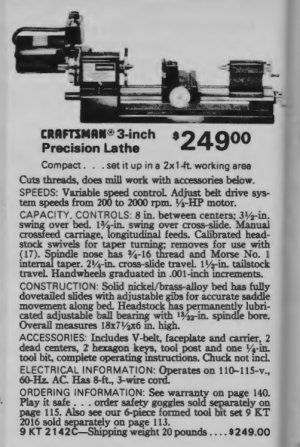- Joined
- Nov 14, 2016
- Messages
- 3,274
I don't remember hearing about the Sears Sherline lathe before, interesting, I'll search for that too. The local Sears store closed here about 4 or 5 years ago, I was depressed for months, had to seek help(I'm a big Craftsman fan, fan of any good tool really).
Sears sold the Sherline lathe and mill for a few years in the 80s to replace the Unimat lathes which Sears sold in the 70s.
Ad from the 1981 Sears / Craftsman catalog

Interesting stand you are making. I've considered making a base from aluminum plate, but the current plywood base has been adequate for my needs and really puts making a better base a low priority.

